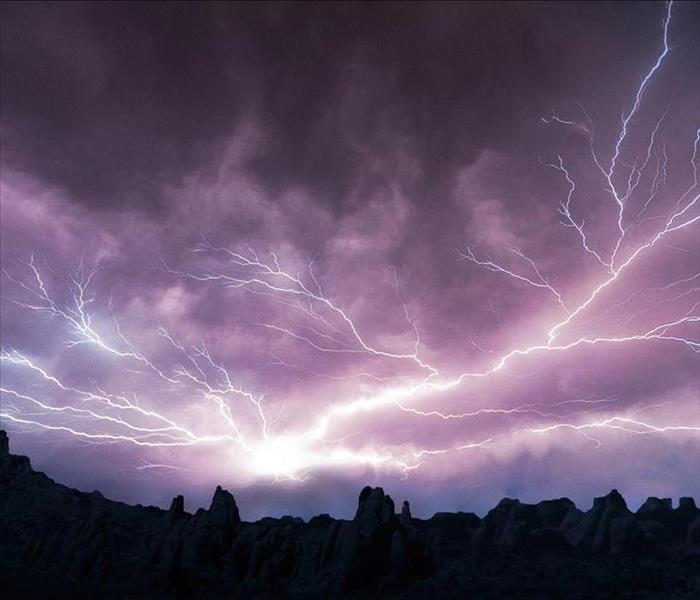When Lightning Hits a Building
6/12/2022 (Permalink)
Lightning is the occurrence of a natural electrical discharge of very short duration and of very short duration and high voltage between a cloud and the ground or within a cloud. This violent and sudden electrostatic discharge generates a bright flash and sometimes thunder. There are about 25 million lightning strikes a year in the United States. A cloud to ground lightning bold will find the path of least resistance.
Most houses have a path that the lightning can follow, causing damage in its wake. Gas lines, water pipes, electrical lines, phone, and cables lines, to gutters and downspouts and metal window frames.
It is important to understand some of the damages that can occur when lightning strikes. Shock wave damage, the lightning can crack and bust masonry bricks, concrete stone, and cinder blocks. It can damage your homes chimney, shatter glass and plaster walls and crack foundations. Power surges can damage the electrical system of a house. When lightning strikes a nearby power line it can travel from the power line to the meter and then into the homes electrical panel. This can be a potential fire hazard as lightning travels through a house it can ignite a fire. The attic or the roof is the most common area that lightning fires start.
There are some preventative measures you can take. Having a professional install a lightning protection system can prevent a direct lightning strike. Trimming trees, tall objects attract lightning. Unplug computers and other appliances. During a storm avoid direct contact with potential lightning routes. The best way to protect yourself and your family from the dangers of lighting and thunderstorms is to be prepared. Purchase a portable NOAA Weather Radio. Seek shelter in the event of a thunderstorm.
If your home has been damaged by storms it is crucial to act quickly as this will lessen damage, limit further damage, and reduce restoration costs. Our highly trained crews at SERVPRO of Vermilion County have the specialized equipment and resources to handle the job, large or small, residential, and commercial.




 24/7 Emergency Service
24/7 Emergency Service
